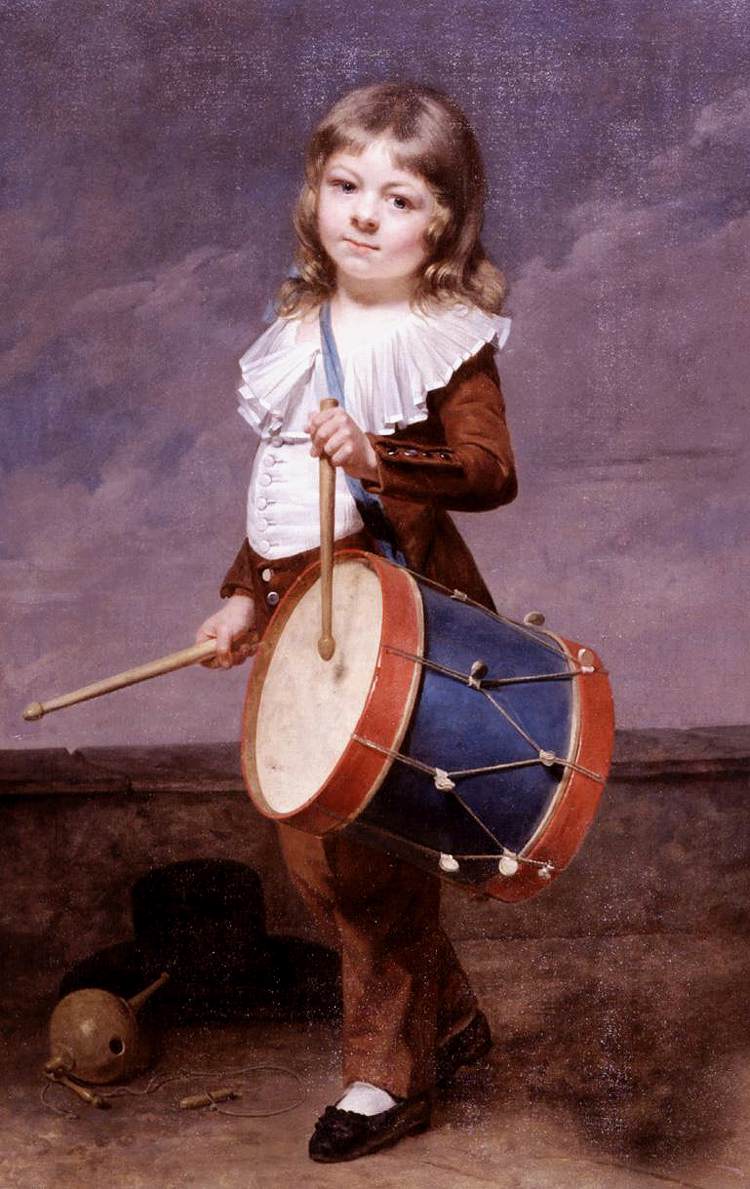Description
Portrait of the Artist's Son as a Drummer is a painting by French artist Martin Drolling that has captured the attention of art lovers for centuries. This 18th-century masterpiece is a leading example of the neoclassical artistic style characterized by its attention to detail and its love of symmetry and harmony.
The composition of the painting is impressive, with the artist's young son sitting in the center of the work, holding a drum on his lap. The drum is the central focus of the painting, its round shape and bright color contrasting with the softer tones of the background. The boy's figure is rendered in great detail, and his calm, focused expression is a testament to Drolling's talent for capturing the essence of his subjects.
The use of color in Portrait of the Artist's Son as a Drummer is remarkable. The soft, earthy tones of the background contrast with the bright red of the boy's uniform and the white of the drum. The combination of colors creates a sense of balance and harmony in the painting.
The history of the painting is interesting. It was created in 1810 as a portrait of one of Drolling's sons. The painting was acquired by the Louvre Museum in 1824 and has been one of the most popular works in the collection ever since.
In addition, there are little known aspects about this painting. It is believed that the child featured in the painting was actually Drolling's youngest son, who tragically died shortly after the work was completed. It is said that Drolling was so moved by the loss of his son that he never painted a portrait of a child again.
In short, Portrait of the Artist's Son as a Drummer is a masterpiece that combines a stunning artistic style with stunning composition and innovative use of color. Its story and the little-known details behind the painting make it all the more fascinating and memorable.

